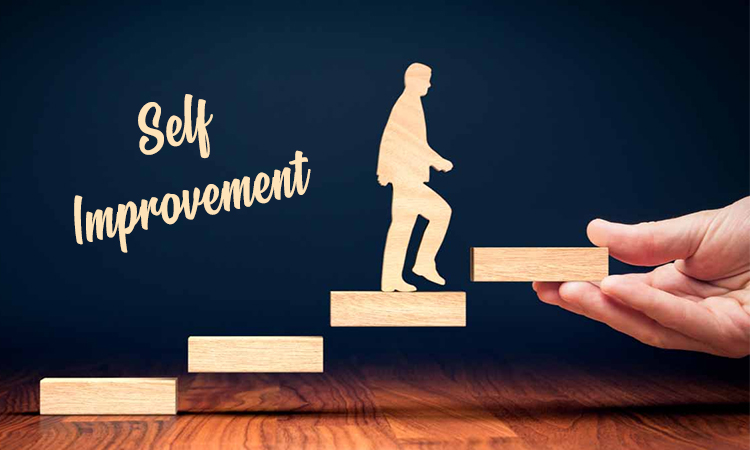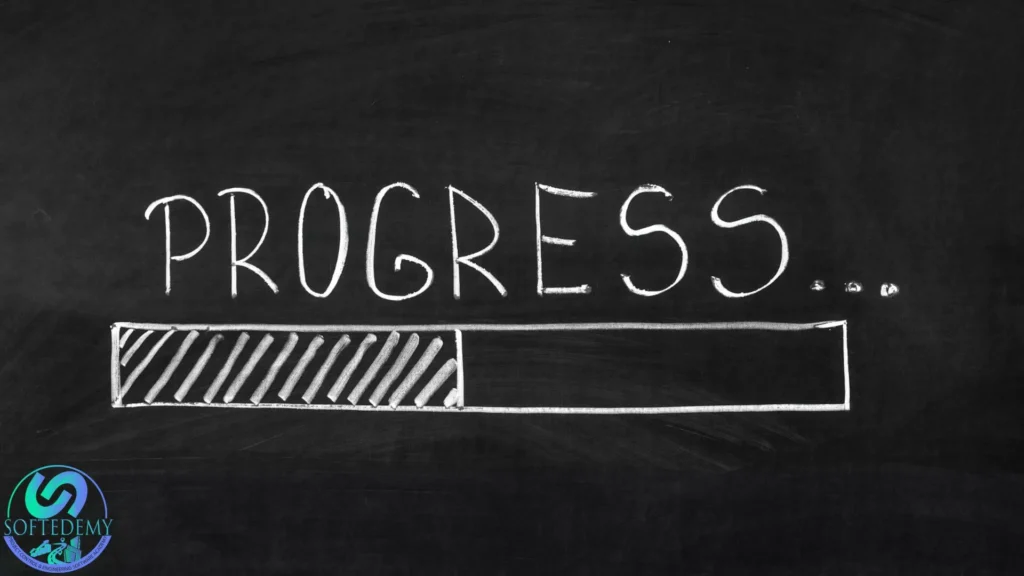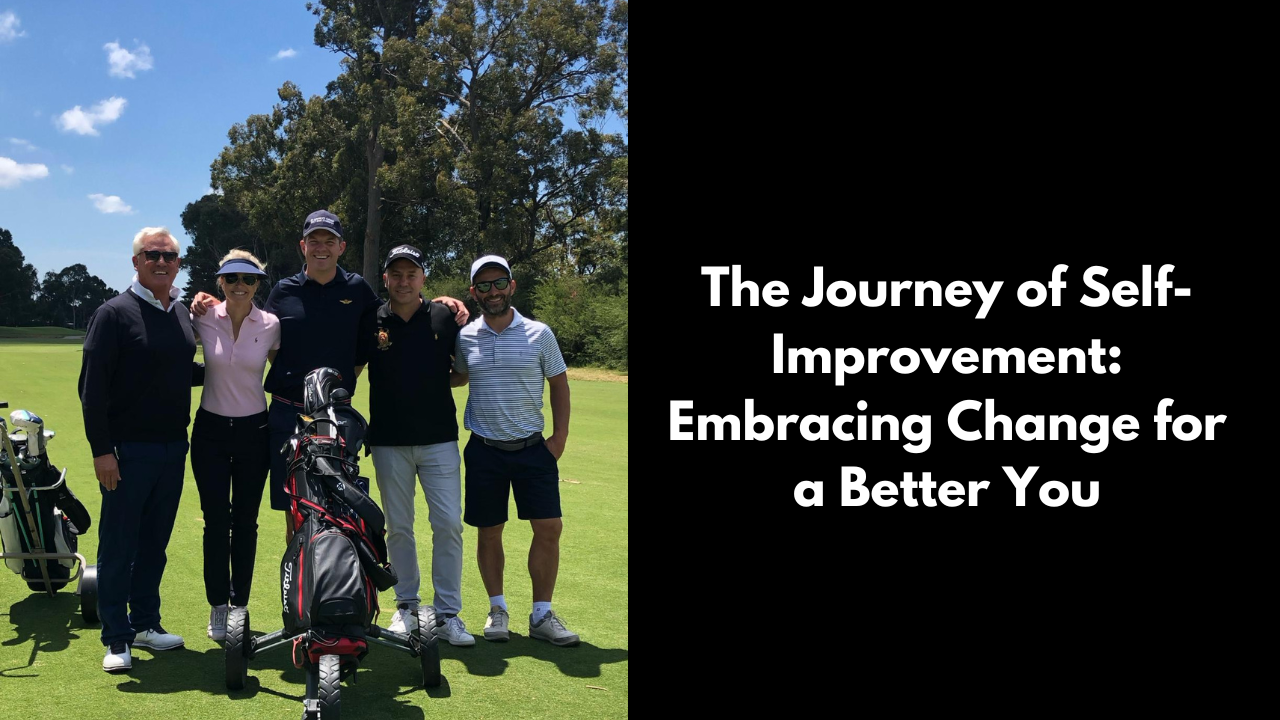In a world that is constantly evolving, the pursuit of self-improvement has never been more important. Whether it’s advancing in your career, building stronger relationships, or simply becoming a better version of yourself, self-improvement is a journey that everyone can embark on. It’s about recognizing areas where you can grow, setting goals, and taking actionable steps towards becoming the person you aspire to be. This blog explores the significance of self-improvement, how to approach it, and why it’s essential for personal and professional fulfillment.
Understanding Self-Improvement: A Continuous Process

What Is Self-Improvement? Self-improvement is the process of identifying your strengths and weaknesses and taking deliberate actions to enhance your skills, habits, and overall well-being. It’s not about perfection, but rather about continuous growth and learning. Self-improvement encompasses various aspects of life, including mental, emotional, physical, and social dimensions.
The Importance of Self-Awareness: The first step in any self-improvement journey is self-awareness. Understanding your thoughts, emotions, and behaviors allows you to identify areas that need attention. Are you procrastinating too much? Do you struggle with communication? Are you neglecting your health? By being honest with yourself, you can pinpoint what needs to change and why.
Setting Goals: The Roadmap to Improvement
SMART Goals: Once you’ve identified areas for improvement, the next step is setting goals. Effective goals are SMART: Specific, Measurable, Achievable, Relevant, and Time-bound. Instead of vague intentions like “I want to get fit,” a SMART goal would be “I will work out for 30 minutes, five times a week, for the next three months.” This clarity and structure make it easier to track progress and stay motivated.
Short-Term vs. Long-Term Goals: It’s important to distinguish between short-term and long-term goals. Short-term goals are the immediate steps you can take to start improving, while long-term goals are the broader objectives you aim to achieve over time. For example, a short-term goal could be to read a self-help book this month, while a long-term goal might be to cultivate a daily reading habit over the next year.
Overcoming Obstacles: The Challenges of Change

Facing Resistance: Change is difficult, and resistance is a natural part of the process. Whether it’s fear of failure, lack of motivation, or external pressures, there will be obstacles along the way. The key to overcoming resistance is to recognize it and confront it head-on. Remind yourself of the benefits of the changes you’re making and the consequences of staying the same.
Dealing with Setbacks: Setbacks are inevitable, but they don’t have to derail your progress. It’s important to approach setbacks with a growth mindset—viewing them as opportunities to learn and improve rather than as failures. If you miss a workout or fall back into an old habit, don’t be too hard on yourself. Instead, analyze what went wrong and adjust your approach to prevent it from happening again.
Building Positive Habits: The Foundation of Self-Improvement
The Power of Habits: Habits play a crucial role in self-improvement. They are the small, consistent actions that compound over time to produce significant results. Whether it’s waking up early, eating healthily, or practicing gratitude, building positive habits can lead to lasting change. Start by focusing on one habit at a time, and gradually build on your successes.
The Habit Loop: Understanding the habit loop—cue, routine, reward—can help you establish new habits or break old ones. The cue triggers the behavior, the routine is the behavior itself, and the reward reinforces the behavior. By consciously designing your habit loop, you can make it easier to adopt new habits. For example, if you want to start meditating, your cue could be waking up, your routine could be a 10-minute meditation session, and your reward could be a sense of calm and focus.
The Role of Mindset: Cultivating a Growth-Oriented Perspective
Fixed vs. Growth Mindset: Your mindset plays a critical role in your self-improvement journey. A fixed mindset believes that abilities and intelligence are static, leading to a fear of failure and a reluctance to take on challenges. On the other hand, a growth mindset embraces challenges, persists in the face of setbacks, and sees effort as the path to mastery. Cultivating a growth mindset is essential for continuous self-improvement.
Positive Thinking: The way you think about yourself and your abilities can either propel you forward or hold you back. Positive thinking doesn’t mean ignoring challenges, but rather approaching them with an optimistic and proactive attitude. By reframing negative thoughts and focusing on possibilities, you can build the resilience needed to navigate the ups and downs of self-improvement.
The Influence of Environment: Surrounding Yourself with Support
The Impact of Your Social Circle: Your environment, including the people you surround yourself with, greatly influences your self-improvement efforts. Surrounding yourself with supportive, like-minded individuals can provide encouragement and accountability. Conversely, negative influences can sabotage your progress. Evaluate your social circle and seek out relationships that inspire and uplift you.
Creating a Conducive Environment: In addition to your social circle, consider the physical and mental environment you create for yourself. Decluttering your space, organizing your schedule, and setting boundaries are all ways to create an environment that supports your goals. For example, if you’re trying to eat healthier, having a kitchen stocked with nutritious options will make it easier to stick to your plan.
Measuring Progress: Tracking and Reflecting on Your Journey

The Importance of Tracking: Tracking your progress is essential for staying motivated and seeing how far you’ve come. Whether it’s keeping a journal, using an app, or simply checking off tasks on a list, regular tracking helps you stay on course and make adjustments as needed. It also provides a sense of accomplishment as you see the tangible results of your efforts.
Reflecting on Growth: Reflection is a powerful tool for self-improvement. Regularly taking the time to reflect on your experiences, challenges, and achievements allows you to learn from your journey. Consider setting aside time each week to review your progress, celebrate your successes, and identify areas where you can improve. Reflection helps solidify lessons learned and keeps you focused on your goals.
Conclusion: Embracing the Journey of Self-Improvement
Self-improvement is not a destination but a lifelong journey. It requires commitment, patience, and a willingness to embrace change. By setting clear goals, building positive habits, cultivating a growth mindset, and surrounding yourself with support, you can make meaningful progress in your personal and professional life. Remember, the journey of self-improvement is uniquely yours—embrace it with an open heart and a determination to become the best version of yourself.

